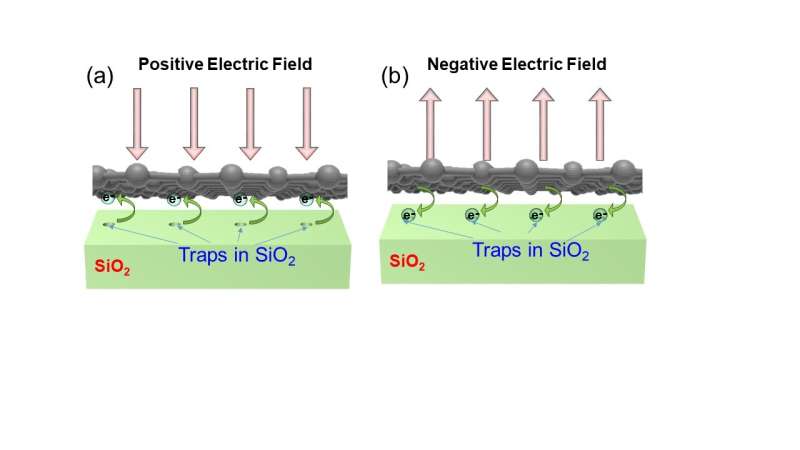The ability to sense the magnitude and polarity of an
electric field is of great scientific interest. Applications
include early prediction of lightning and detection of supersonic
aircraft. Presently, field mills are widely used electric field
sensors. While they can detect electric fields of either polarity
and field of magnitude as low as 1 V/m, the large size (>1m)
hinders their wide use for real-life applications. Also, the motor
inside the field mill, which enables the detection of the electric
field, is prone to failure. Some efforts have been made to
miniaturize the electric field sensor by introducing MEMS-based
sensors. While they are small and do not involve any moving parts,
the complex fabrication process makes these sensors less
cost-effective.
Researchers uncover the mechanism of electric field
detection in microscale graphene sensors



